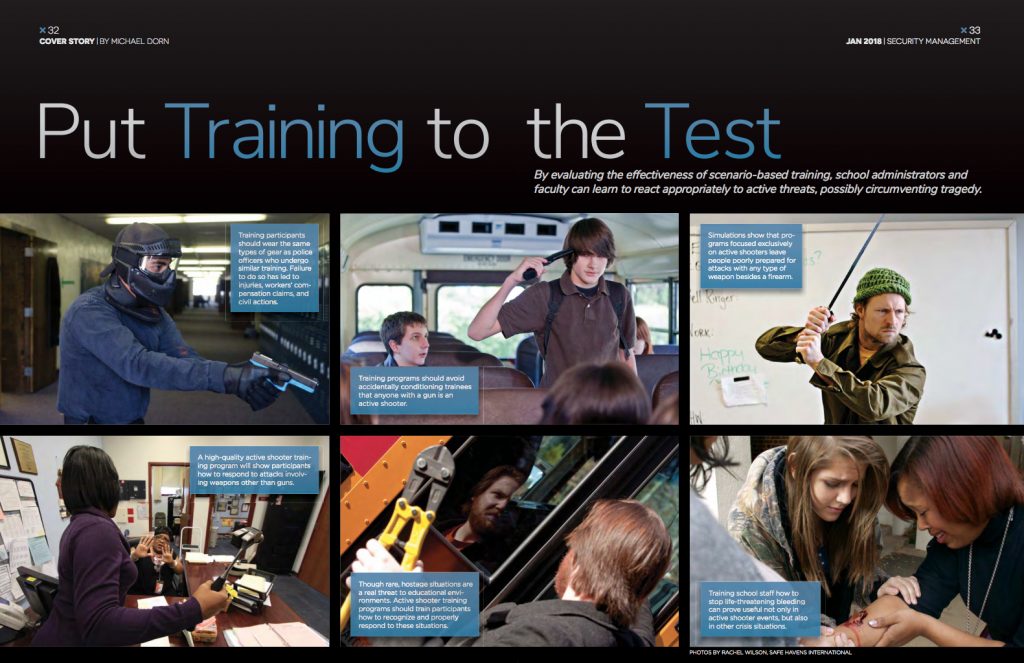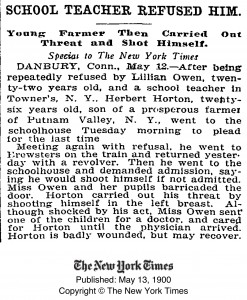Security Management Magazine released it’s January issue this week with an article I was asked to write as the cover story. The article addresses the increasing concerns relating to training injuries, civil actions and accidental operant conditioning caused by a number of options-based active shooter training programs in recent years. Security Management Magazine is the official publication of the American Society for Industrial Security International (ASIS). Read the article here:

Put Training to the Test: By Evaluating the Effectiveness of Scenario-Based Training, School Administrators and Faculty Can Learn to React Appropriately to Active Threats, Possibly Circumventing Tragedy
Web link: https://sm.asisonline.org/Pages/Put-Training-to-the-Test.aspx
PDF Download of the entire issue: https://sm.asisonline.org/ASIS%20Issue%20PDFs/January%202018.pdf
The article focuses on the dire need for proper fidelity testing of options-based active shooter training programs. The article is also designed to help people understand that programs that focus primarily on active shooter events can actually reduce the ability of school staff to respond to emergencies. We have already had quite a bit of positive feedback on the article and I am honored to have been asked by ASIS to write the article. With many injuries and traumatic reactions being experienced by school employees and students around the country, we are hopeful that this article will lead to improvements in how we prepare school employees to address active shooter incidents and the other types of more common school crisis events that cause more than 95% of all deaths on American K12 school campuses.
This article can help people recognize the potential danger of poorly designed and delivered active shooter training programs and videos. As described in the article, any program that does not perform well when trainees have to run through a variety of different types of scenarios is of questionable effectiveness. When people who have been trained in active shooter response programs cannot properly handle audio and video scenarios for basic crisis incidents, their performance will not typically get better when faced with the stress of a life-and-death event. If it does not test well, it will not improve when tested by and actual event. As Lt. Col. Dave Grossman has said, “We do not rise to the occasion, we sink to the level of our training.”

